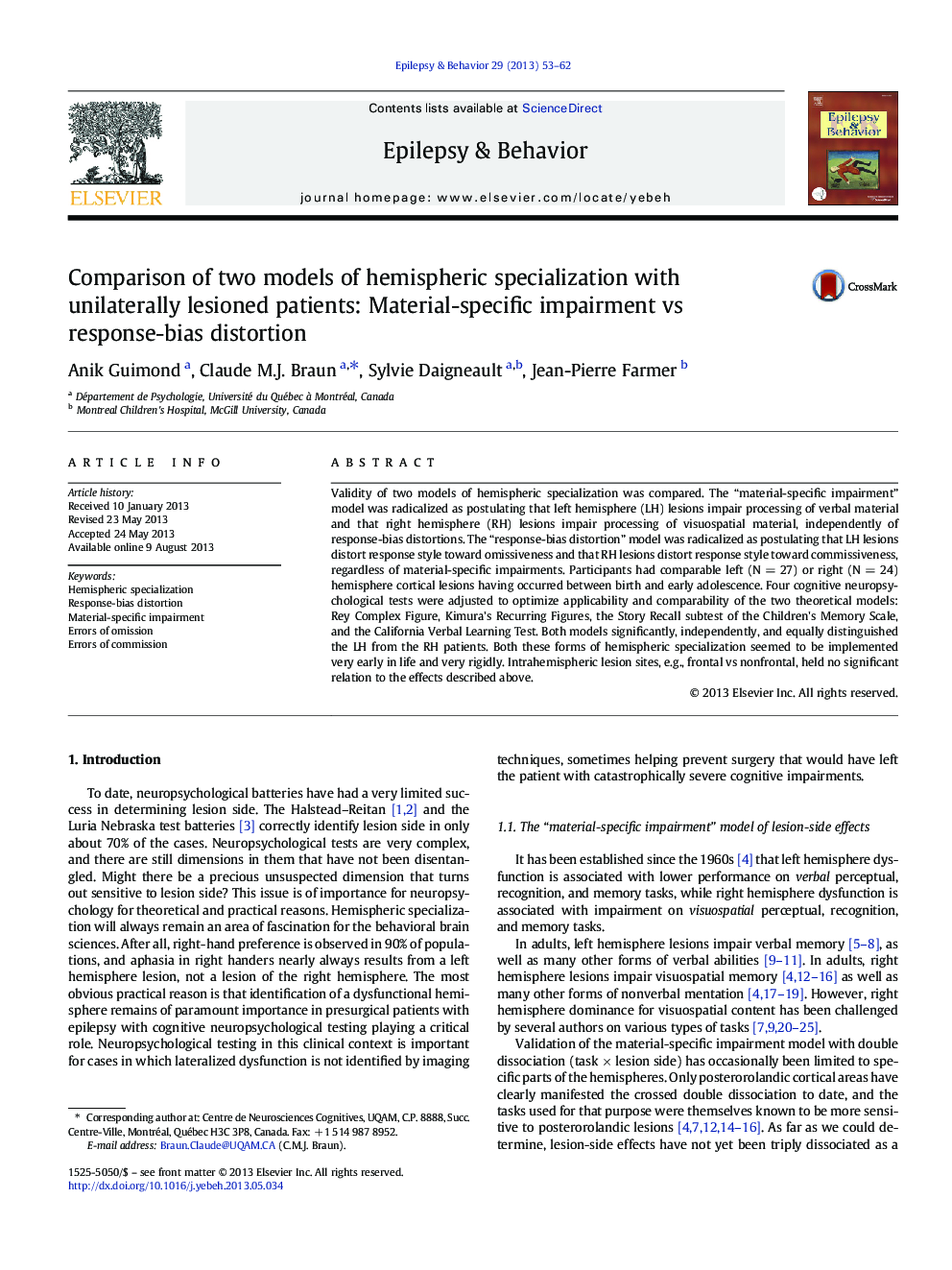| Article ID | Journal | Published Year | Pages | File Type |
|---|---|---|---|---|
| 6013056 | Epilepsy & Behavior | 2013 | 10 Pages |
Abstract
Validity of two models of hemispheric specialization was compared. The “material-specific impairment” model was radicalized as postulating that left hemisphere (LH) lesions impair processing of verbal material and that right hemisphere (RH) lesions impair processing of visuospatial material, independently of response-bias distortions. The “response-bias distortion” model was radicalized as postulating that LH lesions distort response style toward omissiveness and that RH lesions distort response style toward commissiveness, regardless of material-specific impairments. Participants had comparable left (NÂ =Â 27) or right (NÂ =Â 24) hemisphere cortical lesions having occurred between birth and early adolescence. Four cognitive neuropsychological tests were adjusted to optimize applicability and comparability of the two theoretical models: Rey Complex Figure, Kimura's Recurring Figures, the Story Recall subtest of the Children's Memory Scale, and the California Verbal Learning Test. Both models significantly, independently, and equally distinguished the LH from the RH patients. Both these forms of hemispheric specialization seemed to be implemented very early in life and very rigidly. Intrahemispheric lesion sites, e.g., frontal vs nonfrontal, held no significant relation to the effects described above.
Related Topics
Life Sciences
Neuroscience
Behavioral Neuroscience
Authors
Anik Guimond, Claude M.J. Braun, Sylvie Daigneault, Jean-Pierre Farmer,
